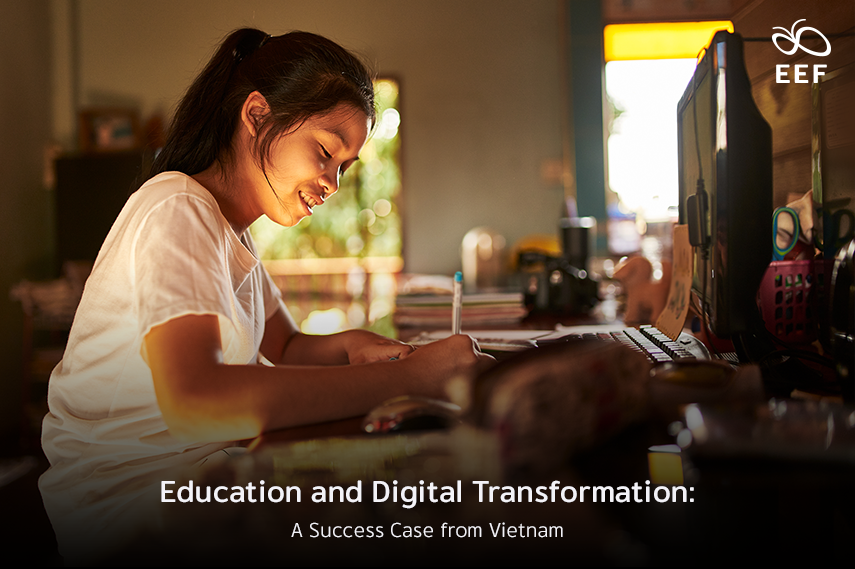
It is evident that the COVID-19 pandemic has had an unprecedented impact on many of our lives, irrevocably altering them. One of the most significant, and profoundly affected, aspects is none other than “education,” which can no longer be taught in conventional classroom settings. To enable teachers and students to carry on with their classes during the pandemic, without having to be in the same classrooms, relying on digital technology is essential.
Nonetheless, as stated by Mr. Toan Dang, ICT in Education officer of UNESCO Bangkok, digital technology-enabled education has many limitations; For example, in the Asia-Pacific region, only 28% of children have access to alternative online education. Such difficulty in accessing online education can be attributed to, among many others, the disparity in access to digital technology between children in downtown and uptown areas, their levels of familiarity with the technology, and their family backgrounds and home environments, and — as added by Mr.Samir Kumar Paul, an international coordinator from YPEER Bangladesh and volunteer from JAAGO Foundation — even their governments’ budgets for developing digital educational systems, which are costly even for the governments themselves. Children are consequently less engaged when learning online than in conventional classrooms where there is interaction, not to mention inappropriate and low-quality teaching materials.
However, that is not the case with Vietnam. Mr.Le Anh Vinh, deputy director-general of the Vietnam Institute of Educational Sciences (VNIES) shared its success story, stating that during its 2-to-4-month-long school closure, the country spared no effort to ensure that teaching and learning can continue effectively during the pandemic. It first surveyed its students to determine whether they had enough digital devices for online learning. According to the survey, more than 70% of its students used such devices in their studies. It then trained its teachers to teach effectively online through various channels and provided digital devices for learning and teaching as well as high-quality teaching materials.
Therefore, it can be concluded that prerequisites to effective teaching and learning using digital technology are government budget and visionary policies as well as the cooperation of all parties.
Source: 2ND ASIA-PACIFIC REGIONAL EDUCATION MINISTER’S CONFERENCE (APREMC II) – Session 3

